Perched between the peaks of the Pollino Park and the fragrant breezes of the Ionian coast, Oriolo is a lovely village in Italy's southern region of Calabria, a small, medieval treasure still delightfully under the radar. In this "secret" place where historical identity remains beautifully intact, ancient memories are carefully preserved.
Oriolo wants his visitor to take it easy while walking on its cobbled streets and alleys. Culture, food, and the simple rhythm of daily life guarantee a genuine and refreshingly local experience. Also, the town is proud of its strong focus on sustainability and slow living. In this article, we'll show you why Oriolo is worth a visit and why it might just become your next favourite Italian village.

Oriolo: A Hidden Gem Between the Mountains and the Sea
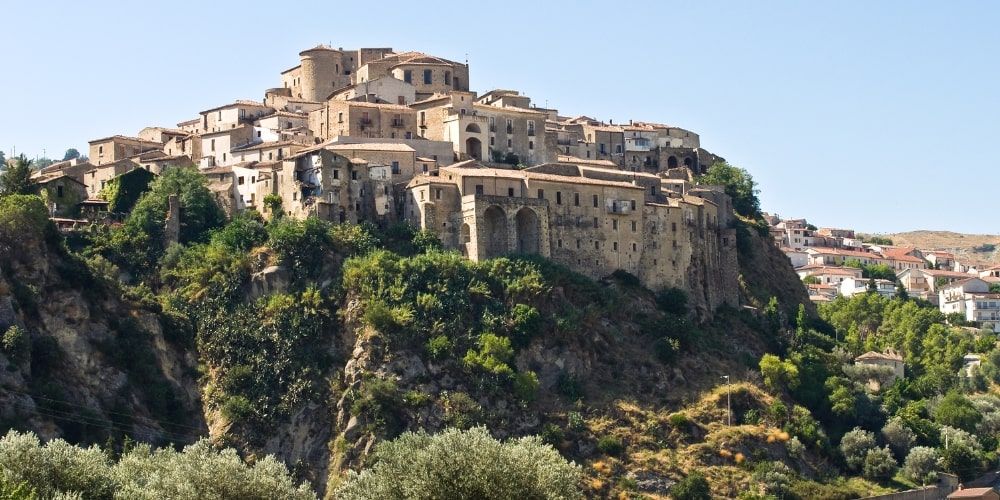
Oriolo is a maze of cobbled lanes and stone houses clustered beneath a striking square-shaped castle 450 metres above sea level. Listed among Italy's Most Beautiful Villages (Borghi più belli d'Italia) and awarded the prestigious Orange Flag by the Italian Touring Club, it's a small, off-the-beaten-path destination that few non-Italian travellers have discovered yet.
Beyond its timeless allure and sweeping views stretching from the mountains to the sea, Oriolo is home to a prosperous and varied cultural heritage made of noble palaces, ancient churches, still-active artisan workshops, and old wine cellars now turned into art galleries. The town also keeps its traditions alive, with lively local festivals and an interesting food panorama.
You can easily explore this fortified village in a few hours. Still, thanks to welcoming accommodation options, a sustainable tourism model, and proximity to the coast (just 18 kilometres away), it's also a great base if you want to stay longer and explore the surrounding area.
Find more on OrioloListen to the podcast version of the article with Monna Lisa and Leonardo's voices
Oriolo: The Charm of a Medieval Village
Oriolo has the typical compact layout of a fortified village. It unfolds across different levels, connected by stairways, small squares, and narrow alleyways that weave through the town.
The remains of the 15th-century defensive walls still enclose the historic centre and its stone buildings featuring beautiful doorways and wrought-iron balconies. You can spot some of them as you follow the main street leading up to the castle, recently restored and now open to visitors.
Panoramic viewpoints overlook the surrounding hills, scenic spots that perfectly capture the village’s profound connection to its geography, halfway between mountains and sea.
Oriolo holds the Orange Flag from the Italian Touring Club, a mark of quality awarded to small towns known for excellent tourism, services, and heritage care. It’s also part of the Most Beautiful Villages in Italy network and, in 2024, hosted the 16th National Festival organised by the association: a clear sign of Oriolo’s cultural and architectural importance.
Oriolo: Faith, Culture, and Hidden Treasures
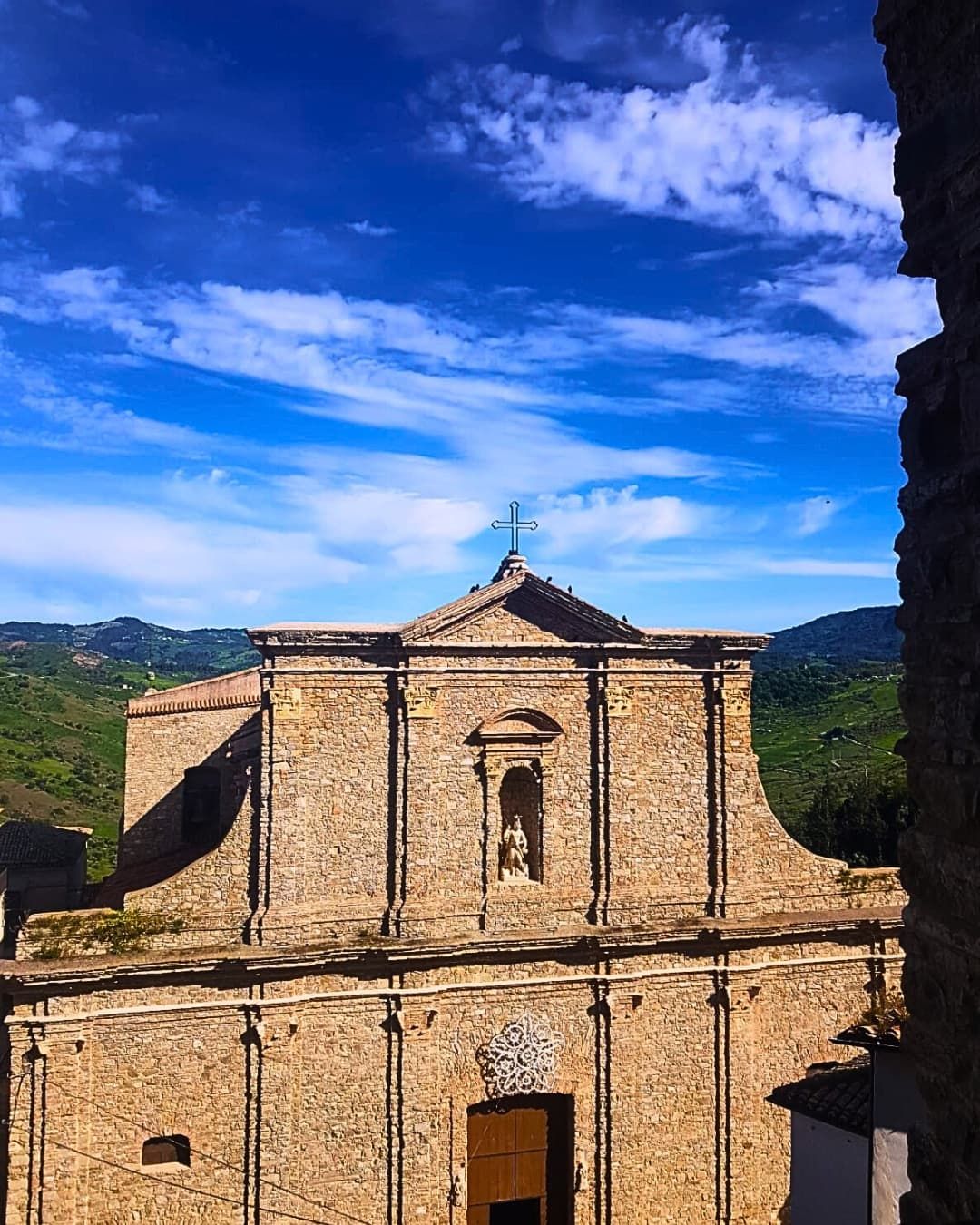
Despite its small size, Oriolo is home to several places of great historical and spiritual value.
The Church of San Giorgio, just a short walk from the castle, is a good starting point. Inside, you'll find a grand Baroque-style altar, valuable paintings and statues, and two relics that lie at the heart of local devotion: one belonging to Saint Francis of Paola, the protector of Oriolo, and the other to San Giorgio, the village's patron saint.
Traditional festivities honour these two figures on 23 and 24 April. The celebrations stick to a classic formula: there are processions and age-old rituals, but also plenty of music, live shows, and fireworks. No one here wants to miss them.
To dive deeper into Oriolo's history and traditions, follow the exhibition routes of the MUDAM. The widespread museum of arts and crafts is a dynamic cultural project that shines a light on the entire community and its heritage. Beyond just showcasing key landmarks, it also celebrates local crafts and traditions that continue to thrive in daily life. The museum network includes the medieval castle, Palazzo Giannettasio (now home to the Museum of Rural Life and a permanent multimedia exhibition dedicated to Gerhard Rohlfs ) and the town's artisan workshops.
The old Convent of San Francis of Assisi is among the most fascinating historical sites. Dating back to 1439, it was only recently uncovered after lying buried for centuries. Today, visitors can see parts of the original walls, remains of the cloister, and some surviving frescoes, all testament to the long-standing Franciscan presence in the region.
A Village to Live: Artisan and Culinary Experiences
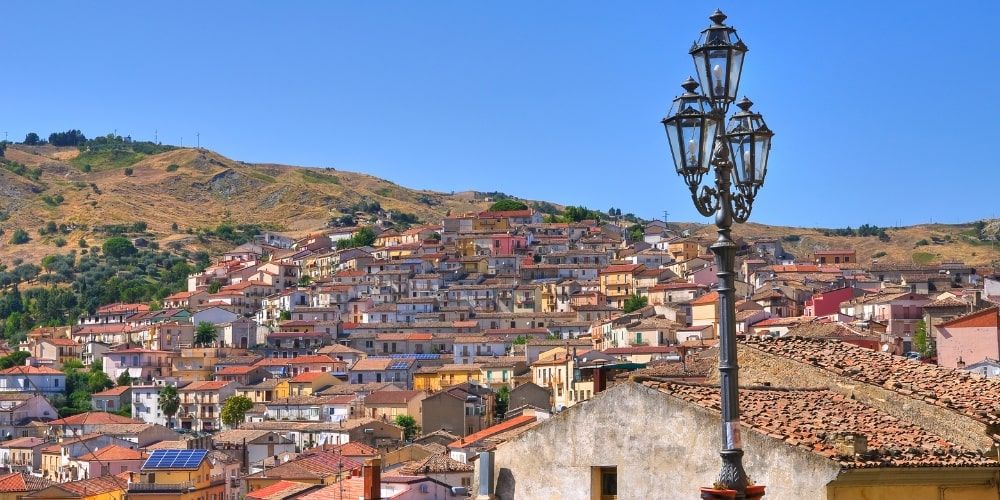
Day after day, workshops and kitchens keep the spirit of the village alive.
The heart of Oriolo pulses through its shops, wine cellars, and putie (traditional local stores), where time-honoured crafts still endure, albeit more sporadically now. These spaces form the soul of the MUDAM – the Widespread Museum of Arts and Crafts, an open-air institution dedicated to preserving and celebrating Oriolo’s artisanal heritage. As you wander through the historic centre’s winding streets, you’ll stumble upon working ateliers where ancient trades are passed down. Cobblers, tailors, blacksmiths, woodcarvers, and luthiers continue to practise their craft just as they have for centuries.
The village’s deep connection to tradition is also vividly expressed through its cuisine. Oriolo is a proud gastronomic destination, home to several De.Co. (Denominazione Comunale di Origine – municipal designation of origin) products: fragrant extra-virgin olive oil by small local farms, tender milk-fed kid, and fennel-scented taralli (a crisp, savoury biscuits).
Family kitchens and village trattorias serve dishes handed down through generations, with measurements judged "by eye" and secrets never written down: handmade fettuccine, tender meat rolls, pizza nel ruoto (a focaccia-style bread baked in a tin), stuffed aubergines, and busiate (a distinctive curly pasta). After lunch, do as the locals do: ask for a glass of Ulivar, a olive liqueur traditionally sipped as a digestif.
Oriolo: Festivals and Living Traditions
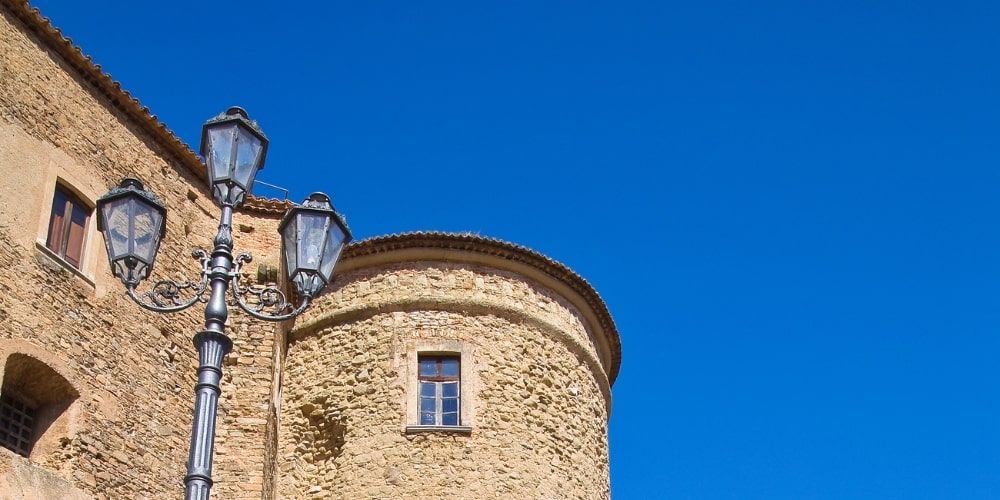
Oriolo features a bunch of occasions that serve as a bridge between villagers and visitors.
The patronal feast dedicated to Saints George and Francis of Paola is probably the event everyone in town awaits to attend. Perhaps the most evocative moment of the festa held each April is the release of a hand-crafted hot air balloon. The unusual spectacle never fails to captivate locals and visitors. Adding to the festive spirit, the historic Oriolo Town Band provides the soundtrack to the celebration.
Summer brings its rituals, too. The open-air theatre La Portella, a cultural landmark in Oriolo, hosts a popular theatre season between July and August. Often free to attend, the performances take place in a striking natural amphitheatre at the foot of a rock face, with the silhouette of the castle and the Church of Saint George etched against the skyline above.
Smaller cultural and gastronomic events that pay tribute to Oriolo’s food and wine scenario and its farming and artisan traditions also enrich the annual schedule. The one for toasts and snacks? Vincanta, a celebration of local winemaking featuring cellar tours and guided tastings.
Oriolo Green: Slow Travel and Sustainable Escapes
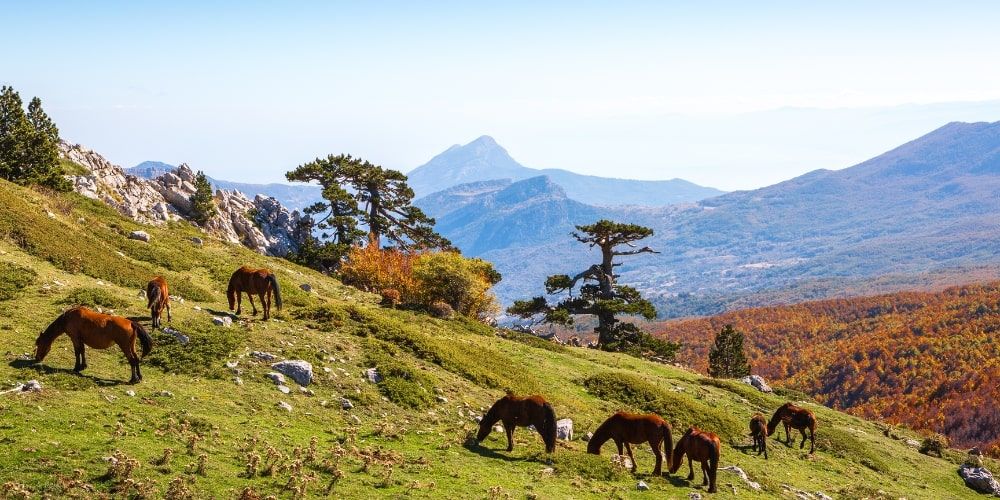
Oriolo is the destination for mindful travellers, those who seek places off the beaten path, unspoilt, uncrowded, and wonderfully human in scale.
The village is perfectly attuned to the spirit of slow travel. Its intimate layout invites visitors to explore at a gentle pace, while the experiences one can choose often have something to do with nature, craftsmanship, and local gastronomy.
In recent years, Oriolo has focused on enhancing its heritage without disturbing the environment's delicate balance. The landscape here opens onto sweeping green vistas and untouched countryside.
Oriolo sits on the edge of the Pollino National Park, one of Italy's largest protected areas. Hiking trails and scenic footpaths are countless. There is a route to the Sanctuary of Madonna del Pollino, a place of nature and spirituality, and another to Serra di Crispo, renowned for its majestic loricate pines.
The historic villages of Cersosimo and San Giorgio Lucano are a short distance away, and a little further afield lie the other Bandiera Arancione (Orange Flag) villages of Calabria: Morano Calabro and Civita.
Also, those craving the sea won't need to travel far. Some of Southern Italy's most beautiful beaches, including Montegiordano, Rocca Imperiale, Roseto Capo Spulico, and Trebisacce, are less than 30 minutes away.
How to Get to Oriolo
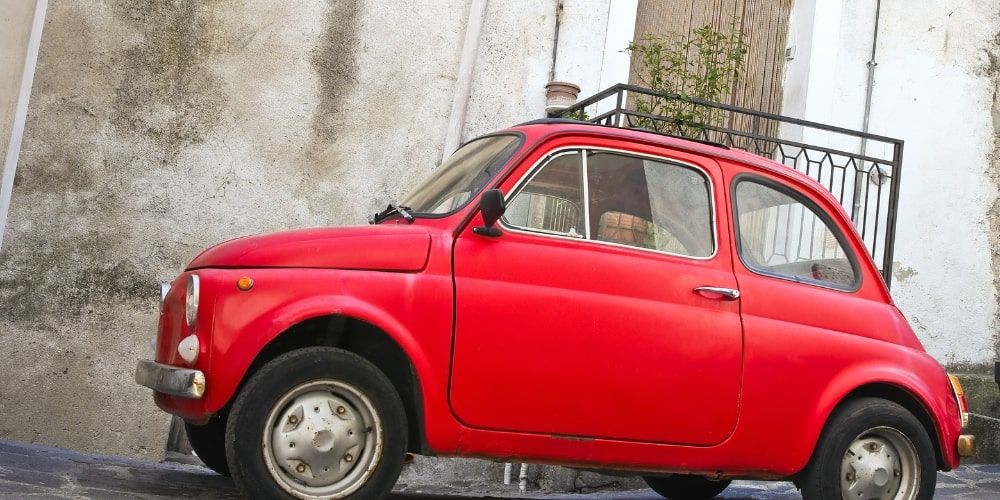
Getting to Oriolo by car is a flexible way to explore the village and the surrounding area.
Coming from the north, like Naples or Salerno, the recommended route is via the A2 motorway, exiting at Lauria Nord. From there, continue on State Road 653 Sinnica and then State Road 481 towards Oriolo. The journey from Salerno takes around 2 hours and 15 minutes.
If you’re coming from the Ionian coast, you can follow State Road 106 before joining State Road 481 from Amendolara.
For travelling by train, the nearest station is Amendolara-Oriolo, just a few kilometres from the village. It’s served by regional trains on the Taranto-Reggio Calabria line. In the summer, the "Magna Grecia Line" railway service also runs, linking the main towns along the Ionian coast. Alternatively, consider the stations of Rocca Imperiale or Roseto Capo Spulico, then continue by bus, taxi or hire car.
Oriolo is also served by a local bus service operated by SAJ, which links the coast with inland villages.
About the author
Written on 01/07/2025

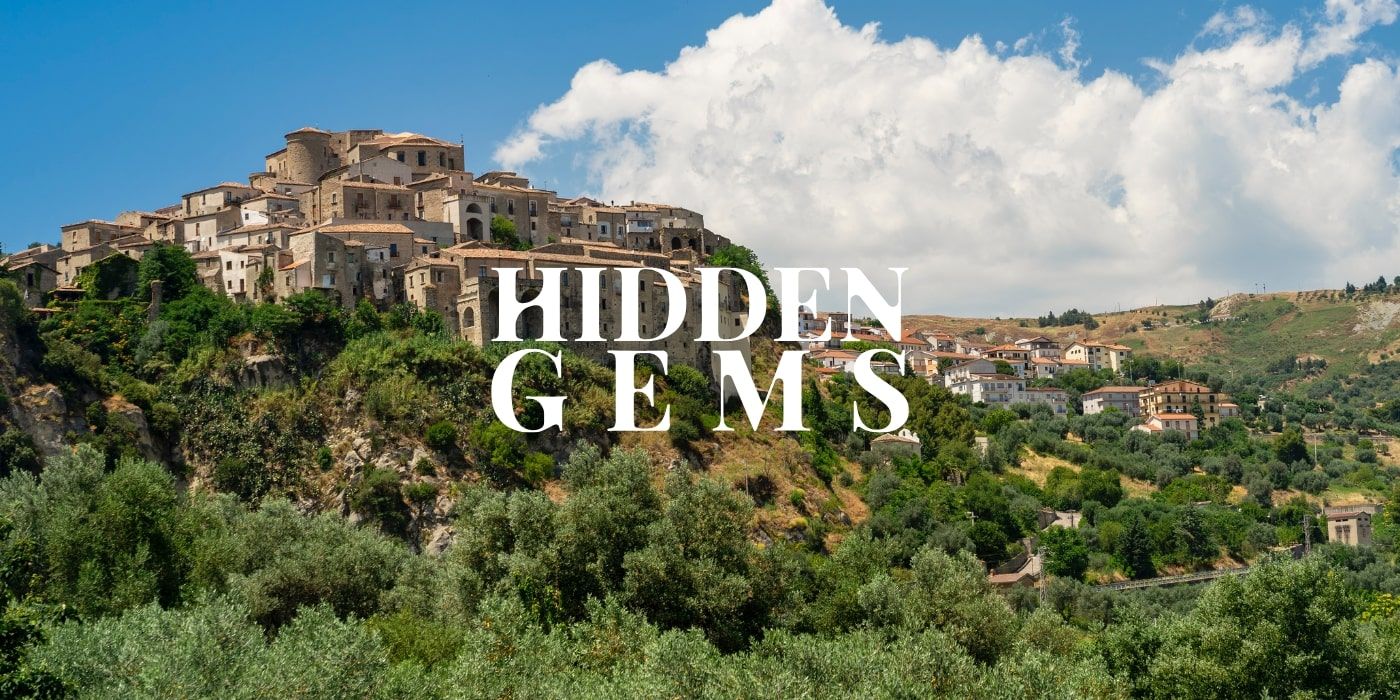

Lorena Calise
The Italian village of Oriolo, in Calabria, is the hidden gem you wish you had discovered sooner. Here’s what you need to know.